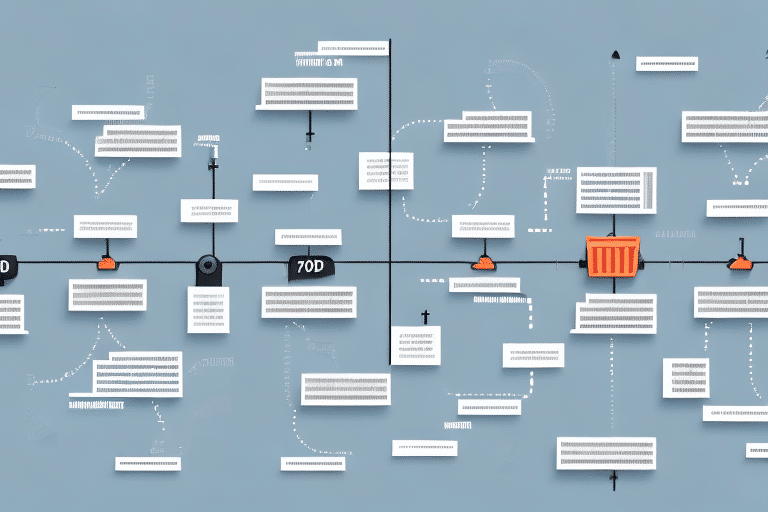Introduction to Lead Time in E-Commerce
Lead time is a critical metric in e-commerce that measures the duration between when a customer places an order and when they receive it. Understanding and optimizing lead time can significantly enhance customer satisfaction, foster brand loyalty, and boost overall sales. In today’s competitive online marketplace, minimizing lead time is essential for retaining customers and outperforming competitors.
Measuring Lead Time Effectively
What is Lead Time?
Lead time encompasses the total time taken to process, pack, and ship an order, as well as the delivery duration to the customer. Accurately measuring lead time allows businesses to identify inefficiencies and streamline their operations for better performance.
Importance of Accurate Measurement
Precise measurement of lead time helps in setting realistic delivery expectations, improving inventory management, and enhancing supply chain efficiency. It also aids in preventing stockouts and overstocking, ensuring that inventory levels align with customer demand.
Calculating Lead Time
To calculate lead time, use the following formula:
- Lead Time = Order Processing Time + Shipping Time
Regular monitoring and analysis of lead time data, ideally on a weekly or monthly basis, enable businesses to identify bottlenecks and implement necessary improvements.
Factors Influencing Lead Time
Shipping Distance and Methods
The distance between warehouses and customers, along with the chosen shipping method, significantly impacts lead time. Expedited shipping options, such as next-day or two-day delivery, can reduce lead time but may incur higher costs.
Product Availability
Availability of products in inventory affects how quickly orders can be fulfilled. Businesses with efficient inventory management systems can ensure that popular items are always in stock, reducing lead times.
Order Volume and Processing Efficiency
High order volumes can lead to longer lead times if order processing systems are not optimized. Implementing automated order processing solutions can enhance efficiency and maintain shorter lead times even during peak periods.
Strategies to Reduce Lead Time
Optimizing Order Processing
Implement automated order processing systems to streamline operations and reduce manual errors. Automation accelerates the processing time, enabling faster fulfillment of orders.
Improving Warehouse Management
Efficient warehouse management, including the use of warehouse management software (WMS) and organized storage systems, can significantly reduce the time required to locate and pack items for shipment.
Collaborating with Reliable Shipping Carriers
Partnering with dependable shipping carriers ensures timely delivery of products. Regularly evaluating carrier performance and negotiating favorable rates can enhance shipping efficiency and reduce lead time.
Implementing Just-In-Time Inventory
Adopting a just-in-time (JIT) inventory system minimizes excess stock and reduces storage costs. JIT ensures that inventory is replenished only when needed, facilitating faster order fulfillment.
Benefits of Optimizing Lead Time
Enhanced Customer Satisfaction and Loyalty
Faster and more reliable delivery times lead to higher customer satisfaction, encouraging repeat business and positive word-of-mouth referrals.
Increased Sales and Revenue
Shorter lead times can result in higher sales volumes as customers are more likely to complete purchases when delivery expectations are met promptly.
Competitive Advantage
Businesses with optimized lead times can outperform competitors by providing superior customer experiences and more efficient operations.
Inventory Management and Lead Time
Effective Inventory Techniques
Techniques such as ABC analysis help categorize products based on their importance and sales volume, allowing businesses to prioritize inventory management efforts effectively.
Managing Seasonality
Adjusting inventory levels based on seasonal demand ensures that products are available when needed, preventing stockouts during peak seasons and reducing overstocking during slower periods.
Leveraging Technology for Lead Time Optimization
Automated Order Processing and Warehouse Management
Investing in automated systems streamlines order processing and warehouse operations, reducing lead time and improving overall efficiency.
Customer Relationship Management (CRM) Systems
CRM systems track customer behavior and preferences, enabling businesses to anticipate demand and prepare inventory accordingly, thus reducing lead time.
Artificial Intelligence and Machine Learning
AI-powered tools can analyze data to identify patterns and optimize supply chain processes, further enhancing lead time management.
Best Practices for Managing and Improving Lead Time
Prioritize Accuracy in Order Processing
Implement clear and efficient systems for receiving and fulfilling orders. Regularly update order processing procedures to minimize errors and delays.
Optimize Warehouse Operations
Organize warehouses for maximum efficiency, employ advanced inventory management systems, and invest in automated picking and packing technologies.
Collaborate with Reliable Shipping Partners
Choose shipping carriers with proven reliability and track their performance to ensure consistent delivery times.
Regularly Monitor Lead Time Metrics
Track key performance indicators (KPIs) such as order processing time, shipping duration, and overall lead time to identify areas for improvement.
Tools and Resources for Managing Lead Times
Order Fulfillment Software
Solutions like ShipBob and ShipStation help automate and streamline order processing and fulfillment.
Inventory Management Systems
Platforms such as TradeGecko and DEAR Inventory assist in maintaining optimal inventory levels and reducing lead time.
Shipping Tracking Tools
Tools like AfterShip provide real-time tracking updates, enhancing transparency and customer satisfaction.
Consulting Services
Engaging with e-commerce logistics consultants can offer expert insights and strategies tailored to your business needs, helping to optimize lead time effectively.
Case Study: Reducing Lead Time to Boost Sales
One e-commerce business successfully reduced their lead time from five days to three by implementing automated order processing and optimizing warehouse management. This improvement led to increased customer satisfaction and higher sales volumes. Additionally, by adopting a robust inventory management system, the business ensured consistent product availability, further enhancing customer trust and loyalty.
Conclusion
Understanding and optimizing lead time is essential for the success of any e-commerce operation. By accurately measuring lead time, addressing the factors that influence it, and implementing effective strategies, businesses can enhance customer satisfaction, increase sales, and maintain a competitive edge in the marketplace. Leveraging the right technologies and best practices will ensure that your e-commerce business operates efficiently and thrives in a dynamic environment.




















